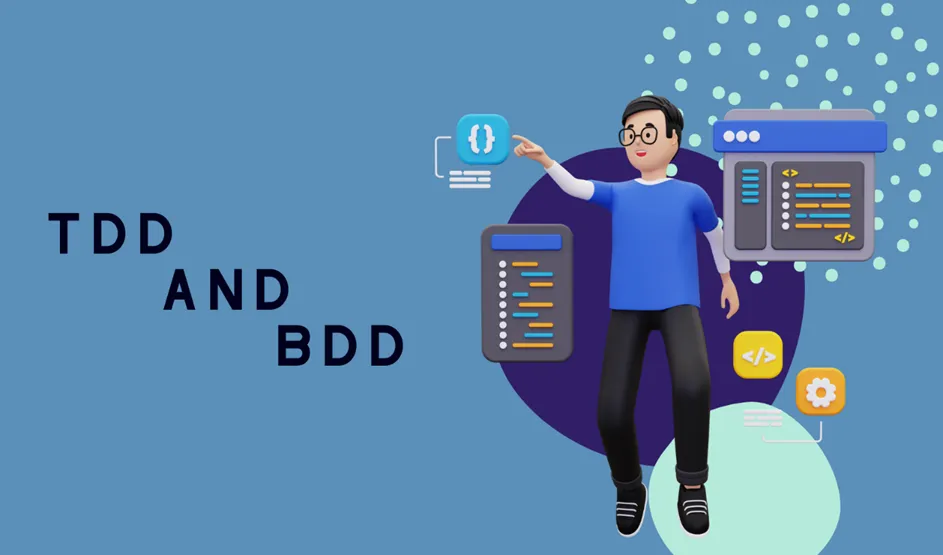

In today’s fast-paced world of software development, it’s important to keep up with the latest techniques and practices. Two such techniques that have gained popularity in recent years are Test Driven Development (TDD) and Behavior Driven Development (BDD). Both TDD and BDD are software development methodologies that emphasize writing automated tests to ensure code quality and to guide the development process.
Test Driven Development (TDD)
TDD is a development methodology that emphasizes writing tests before writing the code that they will test. In TDD, developers write small, incremental tests that exercise different parts of their code. As they write the tests, they discover how their code should be structured and what functionality it should have. Once the tests are written, the developer writes code that passes those tests. This process of writing tests first and then writing code is repeated in a cycle, with each cycle building on the previous one.

One of the main benefits of TDD is that it ensures that code is well-tested and that bugs are caught early in the development process. By writing tests first, developers can be sure that their code is behaving as intended and that it meets the requirements of the project. This can lead to faster development times and more robust code.
Here’s an example of how TDD might be used in Java. Let’s say we’re building a simple calculator application. The first step in TDD would be to write a test that verifies that the calculator can add two numbers:
public class CalculatorTest {
@Test
public void testAddition() {
Calculator calculator = new Calculator();
int result = calculator.add(2, 3);
assertEquals(5, result);
}
}This test creates a new instance of the Calculator class, calls the add method with two parameters, and then asserts that the result is equal to 5. If we run this test, it will fail because we haven’t yet implemented the Calculator class or the add method.
The next step is to write the code that passes this test:
public class Calculator {
public int add(int a, int b) {
return a + b;
}
}
With this code in place, if we run the test again, it should pass. We’ve now successfully implemented the add method, and we know that it works as expected.
Behavior Driven Development (BDD)
BDD is a development methodology that emphasizes collaboration between developers, testers, and business stakeholders. BDD takes the principles of TDD and extends them by focusing on the behavior of the system being developed, rather than just the code itself. BDD encourages developers to write tests in a natural language format that describes the behavior of the system in terms that stakeholders can understand.

One of the key benefits of BDD is that it helps ensure that the system being developed meets the needs of the business. By focusing on behavior and involving business stakeholders in the development process, BDD can help ensure that the system being developed is aligned with business goals and requirements.
Here’s an example of how BDD might be used in Java. Let’s say we’re building a simple checkout system for an online store. The first step in BDD would be to write a feature file that describes the behavior of the checkout system:
Feature: Checkout
Scenario: Add items to cart and check out
Given I have a shopping cart
And I add a product with SKU "12345"
And I add a product with SKU "67890"
When I check out
Then the total should be $50.00
This feature file describes the behavior of the checkout system in terms that business stakeholders can understand. It specifies that the user should be able to add products to their cart, check out, and that the total should be calculated correctly.
The next step in BDD is to write step definitions that implement the behavior described in the feature file:
public class CheckoutSteps {
private ShoppingCart cart;
private double total;
@Given("I have a shopping cart")
public void createShoppingCart() {
cart = new ShoppingCart();
}
@Given("I add a product with SKU {string}")
public void addProductToCart(String sku) {
Product product = ProductCatalog.lookup(sku);
cart.addProduct(product);
}
@When("I check out")
public void checkout() {
total = cart.getTotal();
}
@Then("the total should be ${double}")
public void checkTotal(double expectedTotal) {
assertEquals(expectedTotal, total, 0.01);
}
}These step definitions implement the behavior described in the feature file. They create a new ShoppingCart object, add products to the cart, check out, and then verify that the total is calculated correctly.
With these step definitions in place, we can run a BDD testing framework like Cucumber to automatically execute the steps in the feature file and ensure that the behavior of the checkout system is correct.
Conclusion
In conclusion, Test Driven Development (TDD) and Behavior Driven Development (BDD) are two software development methodologies that can help ensure code quality and align software development with business goals. TDD emphasizes writing tests before writing code, while BDD extends TDD by focusing on behavior and involving business stakeholders in the development process.
By using these methodologies, developers can write more robust code, catch bugs earlier in the development process, and ensure that the software they develop meets the needs of the business.
If this article contains a visual that violates copyright, please contact: [email protected].

